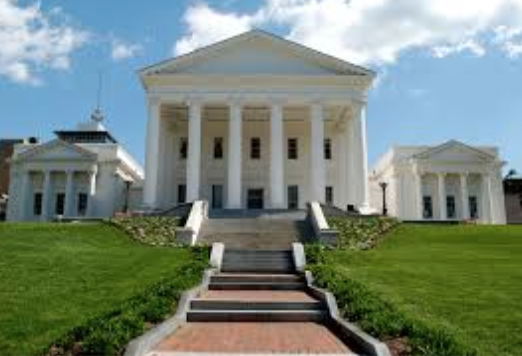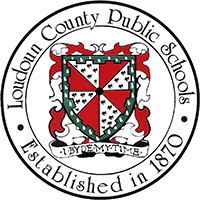 Thanks to Loudoun County Public Schools (LCPS) Energy & Environment Team Administrators John Lord and Michael Barancewicz for submitting their energy efficiency success story. September 2016.
Thanks to Loudoun County Public Schools (LCPS) Energy & Environment Team Administrators John Lord and Michael Barancewicz for submitting their energy efficiency success story. September 2016.
Their success:
LCPS is the third largest school division in the Commonwealth of Virginia. LCPS serves more than 78,000 students in 89 facilities. Since 1993, LCPS has implemented an energy management program in partnership with Cenergistic. This partnership revolutionized how our district views, consumes and uses energy. The LCPS behavioral-focused energy conservation and efficiency program – THE LCPS ENERGY & ENVIRONMENT TEAM — is focused on changing behaviors to realize significant savings. Since 1993, LCPS has saved over $70 Million on energy costs, reduced CO2 emissions by over 352,000 metric tons, and kept dollars that may have otherwise been spent to pay unnecessarily high energy bills available to be spent for a much better purpose – teaching children. Due in part to the efforts of this team, LCPS won First Place in the Virginia School Boards Association’s 2011 Green Schools Challenge and has earned the EPA ENERGY STAR Partner of the Year Award for 2010 & 2011 as well as 2012, 2013, 2014, 2015 & 2016 EPA ENERGY STAR Partner of the Year – Sustained Excellence Awards.
Tell us more about your story:
 The LCPS Energy & Environment Team uses both energy efficiency and energy conservation to accomplish the goal of ensuring efficient and effective stewardship of public resources through continually striving to reduce district energy use and cost without negatively impacting health and safety, the educational environment or productivity.
The LCPS Energy & Environment Team uses both energy efficiency and energy conservation to accomplish the goal of ensuring efficient and effective stewardship of public resources through continually striving to reduce district energy use and cost without negatively impacting health and safety, the educational environment or productivity.
Energy Conservation is the ability to capitalize on behavioral practices which allow LCPS to simply use less energy with existing resources. The tools used include: ingenuity, resourcefulness, discipline, procedures, volunteerism, and all the things that make people great.
Energy Efficiency is the ability to capitalize on new technologies and equipment that will accomplish desired outcomes while using less energy. Giving people more efficient tools allows those who are already conserving to use less energy when energy needs to be expended.
By using both conservation and efficiency methods, the greatest possible success is achieved. However, our real strength is the team itself. At over 90,000 individuals, the LCPS Energy & Environment Team includes all students, staff, parents and other community members who make up the totality of individuals who utilize LCPS sites. By having everyone take part, an empowering alliance in the school system has been created that keeps energy costs within our control.
Find out more about the LCPS Energy & Environment Team.
What was the problem or opportunity you identified?
LCPS had a need for additional funds to use in the classroom and those funds were not forthcoming through “traditional” means. The LCPS Energy & Environment Team has been a consistent success in focusing the expenditure of taxpayer dollars on instruction.
How has this impacted your clients/constituents/
members?
LCPS has saved enough money on energy to buy a new middl e school.
e school.
The ENERGY STAR program thought the LCPS success story was worthy of nationwide promotion and ran the ad at right in Fortune Magazine in 2013. Ultimately, students benefit and that is what LCPS does – through our example, we are teaching the value of both economic and environmental stewardship.
What challenges did you face along the way?
LCPS has been doing this work for over 20 years; the challenges have been many and complex. Growth of the district has been intense as LCPS has tripled in size over this time. Changes in leadership and the cost per unit of energy can provide both opportunities and challenges. As Jim Collins said: “Good is the enemy of great. And that is one of the key reasons why we have so little that becomes great.” Simply focusing on not allowing ourselves to be good enough has probably been the greatest hurdle. Continuing to grow, evolve, innovate and adapt through changing times is never easy.
In what ways could this have implications for Virginia’s energy efficiency landscape?
If every school district could save over 28% on its energy costs, as LCPS has been able to do for the last 20 years, the effect would be astounding. Choosing to take the LCPS approach has positive implications for people, the planet, and proficiency of students.
What’s the next step for you?
The LCPS Energy & Environment Team has begun using social media to help educate folks and get the message out, feel free to follow us on Twitter @LCPSeeteam. LCPS continues to focus on certifying more of our building as ENERGY STAR schools. We have moved from seven certified in 2008 to fifty-five certified in 2015. We expect to have even more in 2016. Constant vigilance and laser focus on the small details will be how we move forward.
What “lessons learned” would you share with other VAEEC members?
Imagine an old man out in the country rocking in his chair on his front porch. Beside him, his faithful dog snoozing on the porch next to him. Each day the neighbor would walk by, and most days it is peaceful and calm, but from time to time the dog’s tail slips under the rocker. The dog lets out a horrible wail and clearly is in pain, but shortly he settles back into dreamland next to the old man. One day the neighbor asks him: “Why doesn’t your dog just move?” The old man responds: “Don’t hurt enough yet.” Our advice is don’t wait until it hurts too much not to move; move as soon as you can. Failure to act or delay in taking action has a cost that can never be recovered. There is no time but now!
Want to learn even more about LCPS success? Contact:
John Lord & Michael Barancewicz
Energy Education Specialists
Loudoun County Public Schools
1002-C Sycolin Road, SE | Leesburg, VA 20175
(571) 252-2960
eeteam@lcps.org
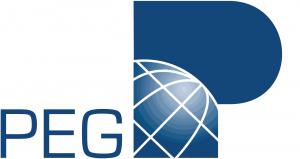 Established in 1998, PEG is a Woman-owned multi-disciplinary engineering, environmental and energy consulting firm that is experienced in working with Residential Construction, Local and Federal Government Agencies, Non-Profit Industries, Private Corporations and Individuals.
Established in 1998, PEG is a Woman-owned multi-disciplinary engineering, environmental and energy consulting firm that is experienced in working with Residential Construction, Local and Federal Government Agencies, Non-Profit Industries, Private Corporations and Individuals.
Headquartered in Fairfax, VA, PEG has a proven track record of success through an understanding and long standing commitment to environmental quality; the natural environment, the built environment, building standards, codes and best practices, building performance standards and understanding of human interaction with their surroundings as it relates to their use of material, energy, and water resources.
The PEG Headquarters staff consists of engineering, energy efficiency, and management professionals that manage hundreds of technical field representatives in more than 28 States. PEG has staff accredited by the USGBC, NEBB, ICC, RESNET, NAHB, AIHA, AEE and BPI. PEG is both a National Provider and Authorized Education Delivery Partner for RESNET and the USGBC.
One specific area of expertise at PEG’s disposal is residential energy efficiency and above code design & development. PEG manages multi-state residential energy efficient and green building construction programs for many production home builders, custom home builders, non-profit housing organizations, utility companies and utility providers. As the housing market endeavors to adapt to the current economic climate, there are challenges to overcome relative to changing codes, cost of construction, competition with other new home builders as well as with existing housing stock.
PEG released a white paper in June 2016 about the Department of Housing and Urban Development’s (HUD) 2016 Multifamily Accelerated Processing Guidelines and the the Federal Register Notice detailing significantly reduced premium rates on mortgage insurance, termed “MIP Reductions.” PEG found that “HUD has created a far reaching incentive to adopt green standards and energy efficiency in the residential construction industry. Not relegated to affordable housing, multifamily projects committed to energy efficiency have the opportunity to reduce their Mortgage Insurance Premiums to a locked .25% over the life of the mortgage.”
Read their white paper here.
The Virginia Energy Efficiency Council is seeking proposals from subject matter experts in the Property Assessed Clean Energy (PACE) field to help us provide technical and legal services to local governments in Virginia who are considering the creation of PACE financing programs.
Download the RFP.
Important Dates:
8/25: Registration deadline; deadline to ask up to 5 questions
9/1: All submitted questions, with answers, will be sent to all registered applicants
9/8: Proposals Due
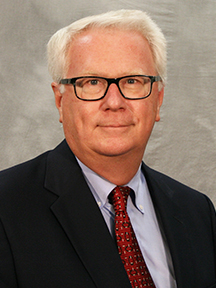 Guest Post by Andy Farmer, Education Resources Manager, Virginia State Corporation Commission
Guest Post by Andy Farmer, Education Resources Manager, Virginia State Corporation Commission
 Virginia Energy Sense (VES), a program of the State Corporation Commission of Virginia, is tasked with helping the state achieve its goal of reducing electric energy consumption 10 percent below 2006 levels by 2020.
Virginia Energy Sense (VES), a program of the State Corporation Commission of Virginia, is tasked with helping the state achieve its goal of reducing electric energy consumption 10 percent below 2006 levels by 2020.
At VES we believe everyone can help reach that goal if given the right information. As such, we reach out to, engage, and educate Virginians about simple and easy ways to reduce electric energy use. Once people engage us, they soon realize that energy efficiency and energy conservation are the most affordable ways to help our state achieve this goal.
Reducing electric energy use puts money back in consumers’ pockets and helps Virginia’s economy and environment. That’s why saving energy just makes sense. And it’s why we are working hard to inform our fellow Virginians.
Strengthening Our Foundation
In early 2015 VES devised a new strategic outreach plan to engage more Virginians to help the state meet its goal. This plan consisted of three primary phases:
- Redefining our key audiences
- Refining our messages
- Determining the best ways to reach our key audiences
To ensure we reached the right people with the right messages, VES commissioned a research survey. Through this survey we discovered the right people consisted of citizens likely to take steps in the near future to make their home more energy efficient. Generally speaking, these people own their home, which are typically newer. We named this group of citizens “motivated savers.”
Utilizing the demographics gathered from the survey, we identified the best ways to reach motivated savers. These approaches included participation in community events, traditional media, digital media, television and digital advertising, and a fully revamped website.
Executing the Plan
Taking all of our findings, we developed a comprehensive outreach plan that focused on each of the approaches we identified to reach large numbers of motivated savers.
Partnerships and Community Events
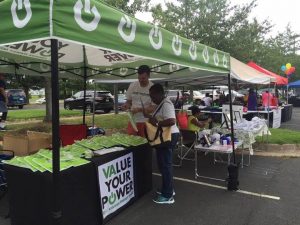
An attendee at the 26th Annual Manassas African American Heritage Festival on Aug. 6 learns more about easy ways to save energy
While we already had a nice array of partnerships with organizations across the state, we added more than 40 partners, increasing our total partners to nearly 100. Through these partnerships, we estimate we can reach more than one million Virginians, many of whom are motivated savers.
In addition, through VES’s participation in more than two dozen community events during the first phase of the new outreach plan we engaged an estimated 150,000 Virginians in person. Participation in large community-based events allows VES the opportunity to engage large numbers of citizens in a highly personal and engaging way, ensuring a positive impact.
Media
Overall, our earned media efforts resulted in more than 750,000 impressions through a variety of media hits in 2015 and 2016. These hits included coverage in newspapers, op-ed placements, and multiple on air television and radio interviews in key markets such as Roanoke, Harrisonburg, and Richmond.
Advertising
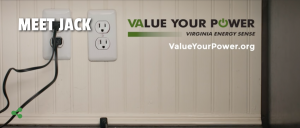 Our advertising approach consisted of traditional on-air television advertising as well as a creative digital, social media driven campaign
Our advertising approach consisted of traditional on-air television advertising as well as a creative digital, social media driven campaign
which featured a new VES spokesperson, Jack, a wise-cracking, talking power plug.
 The traditional television advertising was a Public Service Announcement (PSA) that focused on the idea of “spending your energy elsewhere.” This advertisement was placed across the state and targeted to programming and stations that aligned with our “motivated savers” audience demographic. We estimated that the PSA delivered more than 5 million impressions giving us a reach of up to 96 percent in many key markets, including Harrisonburg, Roanoke, Hampton Roads, Richmond, and Fredericksburg.
The traditional television advertising was a Public Service Announcement (PSA) that focused on the idea of “spending your energy elsewhere.” This advertisement was placed across the state and targeted to programming and stations that aligned with our “motivated savers” audience demographic. We estimated that the PSA delivered more than 5 million impressions giving us a reach of up to 96 percent in many key markets, including Harrisonburg, Roanoke, Hampton Roads, Richmond, and Fredericksburg.
Shortly after the PSA aired in November 2015, we launched the digital campaign featuring Jack. All told, four Jack digital videos resulted in more than 300,000 views, with a watch rate of 47 seconds (out of about 60 seconds for each one), meaning people watch almost the entire video.
Website
With the other elements of our outreach plan completed and in place, we focused on revamping the VES website, which served as the focal point of many of our outreach efforts. The website houses all of the tips, tools, materials and related resources we direct Virginians to through our outreach efforts.
The website, while very comprehensive in terms of content had become outdated from a functionality perspective and didn’t align with the evolving VES brand.
To upgrade the website, we focused on some key changes to bring the website current with best practices, making the site more functional. These changes included integrating modified drop down menus that help drive a more engaging experience and leveraging Jack by having his “at home” video running in the background.
In addition, from a layout perspective, we ensured that as users scrolled
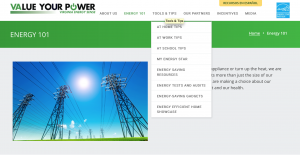 down the main page that tools and tips, resources for use in schools, and information on partnering with VES were kept front and center, as those are items that have been utilized extensively by site visitors.
down the main page that tools and tips, resources for use in schools, and information on partnering with VES were kept front and center, as those are items that have been utilized extensively by site visitors.
We also ensured the 10% challenge sign up form is highlighted on nearly every page on the site, making it easy for folks to take the challenge and join the VES effort.
Finally all of the site’s existing content was reviewed and updated where appropriate to ensure the best experience possible for those who visit the site.
The Impact
The work over the past 18 months has resulted in large numbers of Virginians learning more about how saving energy can save them money and help the state reach its stated goal of reducing electric energy consumption 10 percent below 2006 levels by 2020.
We have seen a large number of citizens sign up and take the 10 percent pledge, further validating our work. Our presence on social media platforms has grown the number of citizens we can contact directly, many of whom are motivated savers we can call to action.
We are encouraged by the progress we’ve made the last few years, and look forward to seeing an even more meaningful impact on Virginia’s electricity consumption over the coming years. To that end, we hope that VAEEC members and those interested in advancing Virginia’s energy goals and the energy efficiency industry will share the VES website and resources with clients, constituents and colleagues.
Southland Energy (Business Silver) has a new video out that spotlights 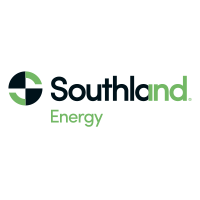 the company’s work with the private St. Anne’s Belfield School in Charlottesville. The company installed comprehensive energy and water saving upgrades for the school, including seven buildings across two campuses.
the company’s work with the private St. Anne’s Belfield School in Charlottesville. The company installed comprehensive energy and water saving upgrades for the school, including seven buildings across two campuses.
Southland Energy’s scope of work involved lighting upgrades, boiler, chiller, and fan coil unit replacements, controls upgrades and integration, high efficiency pumps, motors, and variable frequency drives. In addition, Southland Energy performed water saving upgrades, comprised of plumbing fixtures and irrigation.
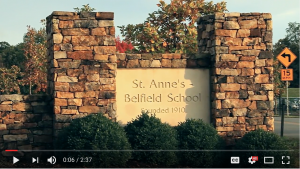 Together the project reduced the school’s carbon footprint by 28 percent, will save more than 1 million gallons of water a year, and save $4.5 million over the project life.
Together the project reduced the school’s carbon footprint by 28 percent, will save more than 1 million gallons of water a year, and save $4.5 million over the project life.
Watch the short video.
You can also learn more about this success story here.
Columbia Gas of Virginia (Business Silver member) has launched a new phase of WarmWise, the company’s energy efficiency and conservation program aimed at reducing customers’ energy usage. With this new phase comes enhanced programs for both residential and business customers. WarmWise is also continuing to partner with contractors across Virginia to educate customers on these rebate programs.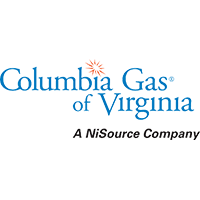
In addition to continuing residential rebates offered for floor insulation, attic insulation, energy efficient windows and gas furnaces, the WarmWise Home Savings Program now offers rebates for smart thermostats and energy efficient doors and skylights. Through the Business Savings Program, commercial customers may receive rebates for smart thermostats, high-efficiency gas furnaces and attic insulation in addition to previously offered rebates for boiler controls, infrared heaters and free high-efficiency pre-rinse spray valves.
 Also new to the program, residential customers may qualify for up to two free Energy Efficiency Kits when they complete the WarmWise Home Savings Evaluation – a free online home energy audit. Customers with natural gas space heating can now receive a free Energy Efficiency Kit with door sweeps and weather stripping. The Energy Efficiency Kit containing faucet aerators and high-efficiency shower heads is again available to customers with natural gas water heating. All customers who complete the evaluation will also receive energy savings tips customized to their homes.
Also new to the program, residential customers may qualify for up to two free Energy Efficiency Kits when they complete the WarmWise Home Savings Evaluation – a free online home energy audit. Customers with natural gas space heating can now receive a free Energy Efficiency Kit with door sweeps and weather stripping. The Energy Efficiency Kit containing faucet aerators and high-efficiency shower heads is again available to customers with natural gas water heating. All customers who complete the evaluation will also receive energy savings tips customized to their homes.
To learn more about energy-saving opportunities, visit WarmWiseVA.com.
The VAEEC wouldn’t be able to accomplish all that we do without extra helping hands. We wanted to take a moment to introduce our membership to our stellar group of interns helping us out this summer and to thank them for a job well done.
Mariah Davis
Events and Social Media
 Many of you met Mariah Davis, our Events and Social Media Intern, at the spring meeting at University of Richmond back in May. She has been helping out at VAEEC headquarters since February 2016. Mariah received her B.S. in Environmental Studies from Virginia Commonwealth University in 2013. She currently splits her time between the Virginia Energy Efficiency Council and the Virginia Conservation Network where she actively engages in stakeholder processes to advance clean water and clean energy policies in Virginia. Her other interests include grassroots advocacy and advancing environmental justice for underrepresented communities. Email Mariah.
Many of you met Mariah Davis, our Events and Social Media Intern, at the spring meeting at University of Richmond back in May. She has been helping out at VAEEC headquarters since February 2016. Mariah received her B.S. in Environmental Studies from Virginia Commonwealth University in 2013. She currently splits her time between the Virginia Energy Efficiency Council and the Virginia Conservation Network where she actively engages in stakeholder processes to advance clean water and clean energy policies in Virginia. Her other interests include grassroots advocacy and advancing environmental justice for underrepresented communities. Email Mariah.
Kelsey Galantich
Census
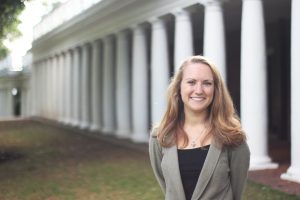 Kelsey Galantich is one of VAEEC’s Census Interns who is doing the very important work of building our list of companies in Virginia who create jobs in the energy efficiency sector as she helps us tackle the Clean Energy Census. As a recent graduate of the University of Virginia, Kelsey has completed a double major in Global Environments & Sustainability and French Language & Literature. She will be teaching English in French Guiana in the Fall and hopes to eventually practice international environmental law with a focus on energy policy. Email Kelsey.
Kelsey Galantich is one of VAEEC’s Census Interns who is doing the very important work of building our list of companies in Virginia who create jobs in the energy efficiency sector as she helps us tackle the Clean Energy Census. As a recent graduate of the University of Virginia, Kelsey has completed a double major in Global Environments & Sustainability and French Language & Literature. She will be teaching English in French Guiana in the Fall and hopes to eventually practice international environmental law with a focus on energy policy. Email Kelsey.
Diana McDermott
Census
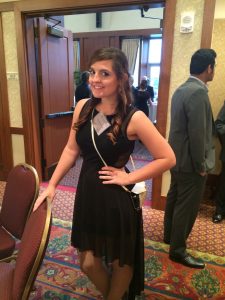 Diana McDermott, another Census Intern, is a Junior studying Economics at Virginia Tech. After participating in the Virginia Tech Sustainability Institute Cohort, Diana became interested in environmental issues and discourse. She will be continuing to study economics with a minor in entrepreneurship in hopes of starting an energy auditing company and small business consultation in energy consumption. Email Diana.
Diana McDermott, another Census Intern, is a Junior studying Economics at Virginia Tech. After participating in the Virginia Tech Sustainability Institute Cohort, Diana became interested in environmental issues and discourse. She will be continuing to study economics with a minor in entrepreneurship in hopes of starting an energy auditing company and small business consultation in energy consumption. Email Diana.
If you cross paths when any of our wonderful interns, I hope that you will take a moment to thank them for their invaluable work for the VAEEC.
Thank you to our many members for their continued support of the Virginia Energy Efficiency Council! We could not have accomplished so much over the past year without it. Membership dues enabled us to:
- Give members access to timely and relevant resources on energy efficiency. Our easier-to-navigate website (complete with new logo) and a monthly e-newsletter enables us to be the go-to resource for credible information on energy efficiency in the Commonwealth.
- Contribute to the policy conversation that will impact Virginia’s utility energy efficiency programs. The VAEEC submitted comments to the State Corporation Commission in response to their request for input on evaluating the creation of protocols to measure the impact of utility energy efficiency programs. You can view our comments and those of several of our members here.
- Bring greater awareness to state elected officials on energy efficiency benefits through our co-sponsorship of Clean Energy Lobby Day.
Members: Your continued support will have an important impact on advancing policies and programs in Virginia to grow energy efficiency endeavors across the Commonwealth.
Some of our biggest goals over the next 12 months include:
- Hosting our first annual awards ceremony in the fall – as part of our well-attended biannual meetings — to highlight energy efficiency champions in the Commonwealth.
- Responding to member requests by initiating new opportunities like a webinar series.
- Supporting the Governor’s Executive Committee on Energy Efficiency’s work to meet our state’s goal of reducing energy consumption 10% by 2020.
- Advancing commercial PACE in Virginia localities.
New in 2016, we have added a Business Platinum membership level starting at $2,000 that has exclusive benefits. We have also adjusted the Business Gold membership level to $1,000 to bring it more in-line with the Business Silver and Platinum dues.
The next 12 months will be critical to our work – work that we cannot do without your help. Please renew your membership today.
(June 28, 2016) Governor McAuliffe today issued Executive Order 57 directing Virginia Secretary of Natural Resources Molly Ward to convene a workgroup and recommend concrete steps to reduce carbon pollution from Virginia’s power plants. The group will evaluate options under Virginia’s existing authority to address carbon pollution. You can read the Governor’s press release here.
The following is the statement of Chelsea Harnish, VAEEC Executive Director:
“The Virginia Energy Efficiency Council applauds Governor McAuliffe’s announcement today on issuing Executive Order 57. Any plan to reduce carbon emissions should include strong energy efficiency policies. The Governor has been a champion of energy efficiency since taking office, which has been exemplified by his action to initiate the first-ever Governor’s Executive Committee on Energy Efficiency. Energy efficiency creates jobs, saves families and businesses money, and helps reduce pollution and carbon emissions — all benefits that the Commonwealth deserves from economic, energy and environmental initiatives like Executive Order 57.”
About the Virginia Energy Efficiency Council
The Virginia Energy Efficiency Council is a 501(c)3 organization seeking to provide a forum for stakeholder interaction and to assess and support programs, innovation, best practices, and policies that advance energy efficiency in Virginia.
By Cynthia Adams, VAEEC Board Chair
Utility programs are evaluated based on a number of metrics: cost, energy saved, impact on capacity or peak load, and public interest benefits to name a few germane to Virginia regulators. How one measures the effectiveness of utility programs – or answers the question “Did ratepayers get their money’s worth?” – is a very important question upon which millions of dollars and Btu’s saved depend.
Recently the VAEEC submitted comments in response to the State 
Corporation Commission’s request for input on evaluating the establishment of protocols, a methodology, and a formula to program the impact of energy efficiency measures (Evaluation, Measurement & Verification or EM&V). So did many other groups, businesses, and individuals (we’ve catalogued many of them here) – and for good reason.
Energy efficiency, which includes demand response, is a “keep the lights on” resource, but only in the sense that it can reduce load such that the lights don’t go off in the first place due to a peak event. We don’t “generate” energy efficiency as a resource in the same way as a power plant, and so, without EM&V, how do we know that the EE was ever implemented or dispatched? EM&V is the performance check that ultimately correlates a decrease in energy use due to the implementation of a certain energy efficient measure(s). We measure and verify in order to evaluate the effectiveness of programs.
While this basic concept may seem straightforward, there are complexities to doing EM&V well that are very important to get right. In Virginia, we don’t yet have an official EM&V protocol, much less standards that apply to all utilities in the same way. Currently, utilities hire a professional consultant to perform EM&V and then report on results to the SCC. This memo from Energy Synapse Economics is a good overview of EM&V in Virginia.
SCC staff will issue their own report with recommendations on June 24th, and a public hearing will be held on July 12th. I will be at the hearing to represent the VAEEC, and other members of the VAEEC and Board will attend to represent their constituencies.
With the U.S. EPA’s Clean Power Plan on the horizon, the state’s voluntary energy efficiency goal looming large, and untold killowatts (and money) wasted daily in inefficient buildings – the VAEEC is very interested in the outcome of this hearing.
A sound, cost-effective, and transparent EM&V process can help get the naysayers past “believing” in the value of energy efficiency to the Commonwealth and instead, seeing the value in dollars and good sense.
Cynthia Adams serves at VAEEC Board Chair and is CEO of Pearl Certification a VAEEC Business Silver Member
 Thanks to Loudoun County Public Schools (LCPS) Energy & Environment Team Administrators John Lord and Michael Barancewicz for submitting their energy efficiency success story. September 2016.
Thanks to Loudoun County Public Schools (LCPS) Energy & Environment Team Administrators John Lord and Michael Barancewicz for submitting their energy efficiency success story. September 2016.  The LCPS Energy & Environment Team uses both energy efficiency and energy conservation to accomplish the goal of ensuring efficient and effective stewardship of public resources through continually striving to reduce district energy use and cost without negatively impacting health and safety, the educational environment or productivity.
The LCPS Energy & Environment Team uses both energy efficiency and energy conservation to accomplish the goal of ensuring efficient and effective stewardship of public resources through continually striving to reduce district energy use and cost without negatively impacting health and safety, the educational environment or productivity.
 e school.
e school.

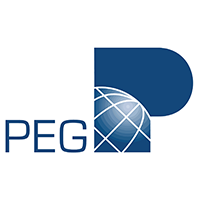
 Established in 1998,
Established in 1998, 
 Guest Post by Andy Farmer, Education Resources Manager, Virginia State Corporation Commission
Guest Post by Andy Farmer, Education Resources Manager, Virginia State Corporation Commission




 the company’s work with the private St. Anne’s Belfield School in Charlottesville. The company installed comprehensive energy and water saving upgrades for the school, including seven buildings across two campuses.
the company’s work with the private St. Anne’s Belfield School in Charlottesville. The company installed comprehensive energy and water saving upgrades for the school, including seven buildings across two campuses.


 Many of you met Mariah Davis, our Events and Social Media Intern, at the
Many of you met Mariah Davis, our Events and Social Media Intern, at the  Kelsey Galantich is one of VAEEC’s Census Interns who is doing the very important work of building our list of companies in Virginia who create jobs in the energy efficiency sector as she helps us tackle the
Kelsey Galantich is one of VAEEC’s Census Interns who is doing the very important work of building our list of companies in Virginia who create jobs in the energy efficiency sector as she helps us tackle the  Diana McDermott, another Census Intern, is a Junior studying Economics at Virginia Tech. After participating in the Virginia Tech Sustainability Institute Cohort, Diana became interested in environmental issues and discourse. She will be continuing to study economics with a minor in entrepreneurship in hopes of starting an energy auditing company and small business consultation in energy consumption.
Diana McDermott, another Census Intern, is a Junior studying Economics at Virginia Tech. After participating in the Virginia Tech Sustainability Institute Cohort, Diana became interested in environmental issues and discourse. She will be continuing to study economics with a minor in entrepreneurship in hopes of starting an energy auditing company and small business consultation in energy consumption. 
